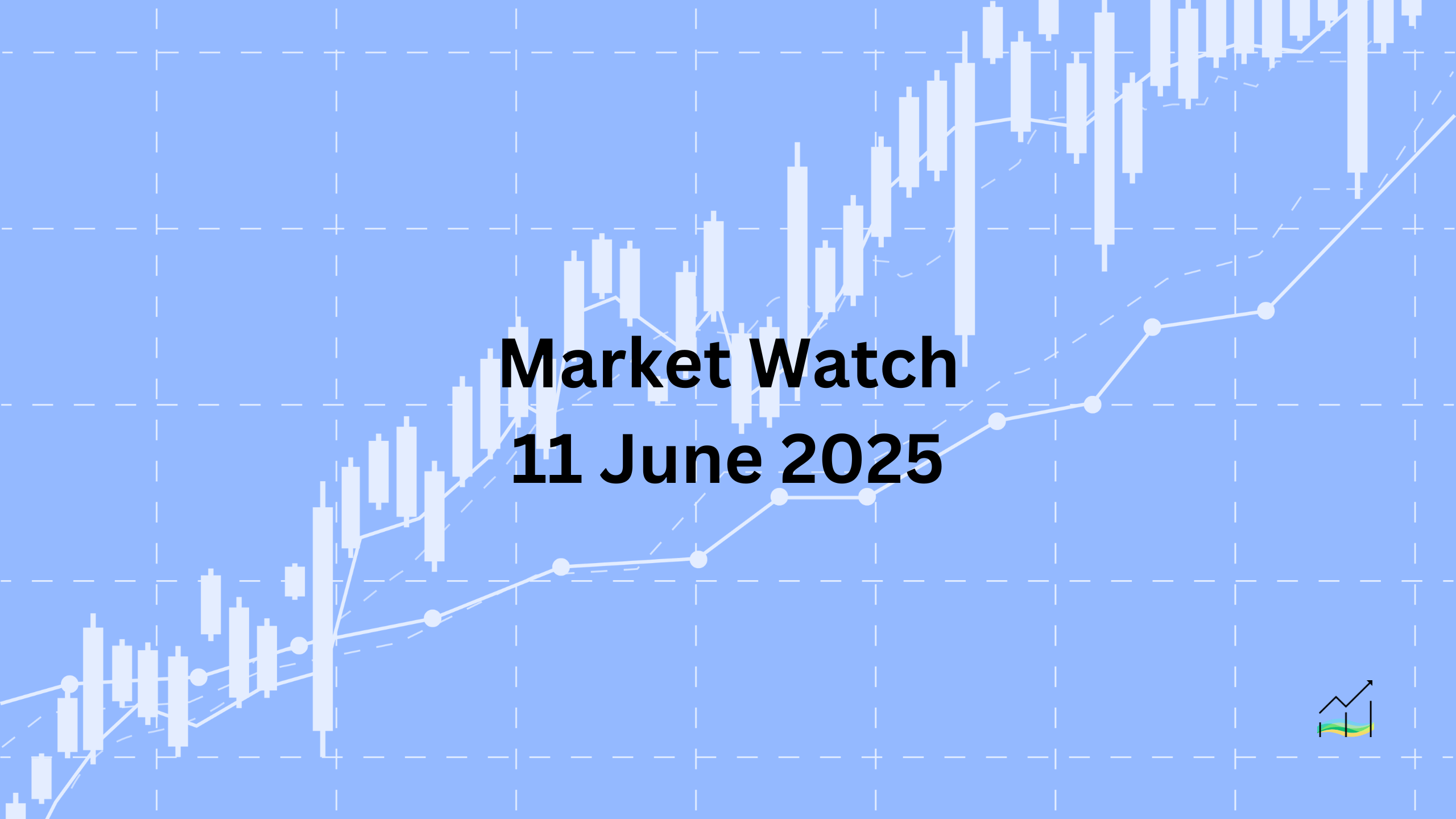11/06/2025 Market Watch

Cautious Market Ahead of U.S. CPI as Dollar Holds Ground
Key Takeaways:
- Dollar remains steady overall, with minor exceptions in euro and franc.
- Emerging market currencies are showing broad strength.
- Asian equities led by Chinese and Taiwanese gains.
- European equities slightly higher after two days of losses.
- US futures soft ahead of key inflation data and bond auction.
- Yields rise across Europe, UK gilts notably underperforming.
- Gold firm, oil remains rangebound.
The dollar is broadly stable as markets remain in a holding pattern ahead of key US inflation data. While it is slightly firmer against most G10 currencies, the euro and Swiss franc are barely changed. The general tone of consolidation in recent days continues, with no strong directional moves in the major currency pairs. Even reports of a joint US-China understanding on the Geneva Agreement have failed to spark much reaction in FX markets, suggesting a limited policy or economic shift at this stage.
Emerging market currencies are showing relative strength today, underpinned by positive momentum in Asian equities. Major Asia Pacific indices posted strong gains, particularly Chinese companies listed in Hong Kong and Taiwan, both of which rose by over 1%. In Europe, the Stoxx 600 is modestly higher, recovering slightly from consecutive sessions of small losses. Meanwhile, US index futures are a touch lower as investors await the release of May CPI figures and a sizable 10-year Treasury auction.
Bond markets are adjusting in anticipation of this data. Yields across Europe are 2 to 3 basis points higher, except for UK gilts which have reversed yesterday’s outperformance due to weak labor data and are now up 6 basis points on the day. The US 10-year yield is also edging higher, hovering near 4.50%. In commodities, gold remains firm though unable to breach yesterday’s peak near $2,350, and crude oil is little changed with July WTI trading in a narrow band around $75.
United States of America
Overview
Markets have shown little response to the recent US-China understanding reached in London. While full details remain unclear, early signs point to the potential easing of certain US export restrictions, including a six-month export approval from China for magnet shipments to American automakers. This development, although politically significant, has not generated notable movement in financial markets.
The Dollar Index continues to hover within a narrow band, reflecting broader uncertainty about the next directional move. For now, the dollar appears to be consolidating, and traders are debating whether this signals a potential bottom or simply a pause before further declines. Attention now shifts to the May CPI report, widely regarded as the most important high-frequency data release of the week. Expectations suggest a marginal increase in both headline and core inflation figures, which may further anchor policy stability in the short term.
Despite political pressure from the White House for lower interest rates, the Federal Reserve is unlikely to deviate from its current stance. Stable unemployment and modest inflation do not warrant immediate policy easing. Moreover, premature action would risk undermining the Fed's credibility. A politically motivated attempt to replace Fed Chair Jerome Powell ahead of his term expiry next May could raise fears about the central bank’s independence, especially if a successor appears aligned with White House interests.
In fiscal matters, May’s budget balance is due shortly. Deficits remain large, though stronger economic growth in Q2 may reduce the deficit as a share of GDP. Year-to-date, the federal shortfall is only slightly smaller than the same period in 2024, highlighting the persistent challenge of managing public finances.
Economic Drivers
- Tentative easing of US-China trade tensions, with possible unwinding of select export controls.
- China granting six-month magnet export approvals to US automakers.
- Dollar Index trading in a tight range, indicating short-term uncertainty.
- Anticipation of May CPI data as a key inflation indicator.
- Rising business input costs due to tariffs, potentially feeding into consumer inflation.
- Stable unemployment rate signals no urgent need for monetary policy changes.
- White House efforts to replace Fed Chair ahead of May 2026 raise concerns over political interference in monetary policy.
- Large fiscal deficits remain a structural issue, though expected to narrow slightly with Q2 growth.
Data and Events
- 11 June 2025: President Trump Speaks.
- 11 June 2025: CPI.
Price Action
- Dollar Index remains rangebound between 98.35 and 99.40.
- Focus on resistance levels around the 20-day moving average near 99.60.
- Trendline from January, February, and May highs at 99.45 acts as short-term resistance.
- Market debate ongoing over whether current consolidation is forming a base or preparing for another decline.
Key Points:
- US-China dialogue hints at reduced trade friction, but market impact has been limited.
- May CPI is the most anticipated data point of the week, with modest rises expected.
- Fed policy remains stable despite White House pressure, with political risks emerging around the Chair’s succession.
- Fiscal deficit remains high but may ease with improved GDP growth in Q2.
- Dollar Index is consolidating within a tight range, with technical levels under close watch.
Canada
Overview
The Canadian dollar remains rangebound against the US dollar, with little change in directional momentum so far this month. While the greenback briefly dipped below recent support levels, there has been no meaningful follow-through. Instead, it has rebounded and is currently trading near session highs in European hours. This consolidative price action reflects the broader theme of subdued volatility in USD/CAD, which has been locked between CAD1.3635 and CAD1.3745 throughout June.
On the domestic front, building permits data is expected to be released soon. This series has shown a consistent alternating pattern since late last year, with month-to-month fluctuations. Following a 4.1% decline in April, the market anticipates a modest recovery in May. A 2.0% increase is the median forecast, suggesting steady but cautious optimism in Canada’s construction outlook.
Economic Drivers
- US dollar consolidation continues to influence USD/CAD trading behavior.
- Limited volatility reflects cautious sentiment and lack of strong directional catalysts.
- Building permits have alternated monthly since November, showing mixed momentum in construction activity.
- Modest recovery in May permits expected, following a decline in April.
Data and Events
- 11 June 2025: Building Permits.
Price Action
- USD/CAD trading in a narrow range between CAD1.3635 and CAD1.3745.
- Current session highs near CAD1.3685 indicate resilience in USD.
- Technical bias leans toward a move toward CAD1.38 before revisiting CAD1.36.
Key Points:
- USD/CAD remains locked in a narrow consolidative range.
- Canadian building permits expected to rise modestly after April’s decline.
- Market momentum remains limited with no strong follow-through in either direction.
- Technical levels suggest possible upside extension toward CAD1.38.
China
Overview
The Chinese yuan continues to trade in a consolidative phase against the US dollar, with recent price action stabilising within a narrow range. After peaking near CNH7.43 two months ago, the dollar weakened to almost CNH7.16 by the end of May, defying expectations that Beijing would devalue the yuan in response to US tariffs. Current trading remains between CNH7.11825 and CNH7.1900, suggesting a pause in volatility. The People’s Bank of China (PBOC) set today’s official reference rate at CNY7.1815, the weakest fix in two months, which reflects controlled currency management amid complex trade dynamics.
China's response to escalating tensions with the US has highlighted its strategic advantage in rare earths and industrial components. The restriction of magnet exports has already disrupted several automotive production lines in the US and Europe. As a result, Washington is reportedly considering easing some export controls and reducing tariffs on substances like fentanyl. While the US aims to hinder China’s access to advanced semiconductors, Beijing has shown that it holds equally critical supply chain leverage. In the short- to medium-term, Western economies face a more difficult path in replacing Chinese imports than China does adjusting to restricted foreign demand.
Economic Drivers
- China maintains a stable exchange rate policy to manage market expectations under trade pressure.
- The PBOC set the lowest dollar reference rate in two months, signaling an intent to stabilise the yuan.
- Export controls on rare earths and magnets highlight China’s strategic leverage.
- Disruptions in US and European auto manufacturing show dependence on Chinese materials.
- Possible easing of US export restrictions and specific tariff adjustments in response to supply chain vulnerabilities.
- China continues to adapt to US chip restrictions by shifting focus to alternative trade partnerships and domestic innovation.
Data and Events
No major economic releases are scheduled today.
Price Action
- USD/CNH has consolidated between CNH7.11825 and CNH7.1900 today.
- Broader consolidation phase extends toward CNH7.2240 to CNH7.2265.
- Peak near CNH7.43 marked the high two months ago; support formed around CNH7.16 by late May.
Key Points:
- Yuan remains in a consolidative pattern against the dollar following sharp appreciation.
- China is leveraging rare earths and magnets in its strategic response to US trade actions.
- The PBOC continues to manage the currency tightly, with the lowest fix in two months.
- Short-term pressure remains on the US and Europe to secure alternatives to critical Chinese imports.
Europe
Overview
The euro remains in a consolidative phase, trading within last Friday’s established range between approximately $1.1370 and $1.1455. Although there was two-sided action earlier in the week, the daily close was little changed, neutralising any strong technical implications. As of the late European morning session, the euro is holding above $1.1400 and testing session highs near $1.1445, reflecting near-term stability despite underlying uncertainty.
While the broader market consensus still points toward a weaker dollar over time, the short-term picture suggests room for a temporary rebound. Several macroeconomic factors are contributing to this view. The eurozone’s growth momentum appears to have peaked, and the Federal Reserve is expected to maintain a hawkish tone at its upcoming meeting. If the updated dot plot reveals only one projected rate cut for the year, instead of the two previously anticipated, that would reinforce dollar strength. Meanwhile, euro bullishness remains crowded, with speculators holding one of the largest net long positions of the year, despite an interest rate differential that still favors the dollar.
Economic Drivers
- Eurozone growth appears to have peaked earlier this year.
- The US labour market remains stable, reinforcing dollar resilience.
- The Federal Reserve is expected to deliver a hawkish hold next week.
- Market positioning in euro futures is heavily skewed toward long bets.
- Interest rate differentials continue to favor holding dollars over euros.
Data and Events
- 11 June 2025: German 10-y Bond Auction.
Price Action
- Euro remains within the $1.1370 to $1.1455 range set last Friday.
- Session highs today near $1.1445, with support around $1.1400.
- Lack of follow-through after trading both sides of Monday’s range limits technical momentum.
- Current structure suggests potential for a short-term pullback.
Key Points:
- Euro is consolidating within a tight range with no clear breakout.
- Growth momentum in the eurozone is fading as US data holds steady.
- Hawkish Fed expectations and crowded euro long positions limit upside.
- Near-term risks lean toward a modest euro retracement.
Japan
Overview
The Japanese yen continues to weaken as the US dollar climbs toward key resistance levels. Although the dollar failed to close above JPY145 in the previous session, it still recorded its highest daily close since mid-May. For the fourth session in a row, the dollar has posted higher lows, approaching the JPY145.30 level. A break and close above this zone would likely shift the technical tone decisively, opening the path toward the JPY146.00 to JPY146.30 range.
Market focus has shifted away from political headlines, such as tariff noise and social media commentary, to more tangible macro drivers. Notably, the yen has resumed its sensitivity to US 10-year Treasury yields. The 30-day rolling correlation, which had weakened significantly in May, has now rebounded to nearly 0.40. This re-coupling suggests that yen movements are once again tracking interest rate differentials, reinforcing the importance of US bond market dynamics in driving the currency pair.
Economic Drivers
- Reduced impact of political noise and tariffs on yen sentiment.
- Market is refocusing on yield differentials, particularly the US 10-year Treasury rate.
- The yen is regaining sensitivity to US interest rates, with rising correlation metrics.
Data and Events
- 11 June 2025: PPI.
Price Action
- Dollar failed to close above JPY145 but remains near monthly highs.
- Current resistance stands near JPY145.30, with a break suggesting potential toward JPY146.00–146.30.
- Four consecutive sessions of higher lows indicate building upward momentum.
- Technical outlook would strengthen with a close above JPY145.30.
Key Points:
- USD/JPY is nearing key resistance after recording its highest close since May 16.
- The yen is once again tracking US 10-year yields more closely.
- Political influences have faded, placing bond market dynamics back in focus.
- Price action suggests bullish momentum is building above JPY145.
United Kingdom
Overview
Sterling faced pressure following a weaker-than-expected labour market report, which prompted traders to bring forward expectations for the next Bank of England rate cut. The currency fell sharply to around $1.3455 before recovering to approximately $1.3535 during the North American session. It later stabilised just below the $1.35 mark after European markets closed. Today, the pound is trading within a narrow band between $1.3465 and $1.3510, reflecting a brief consolidation phase. A close below the 20-day moving average, currently near $1.3475, would mark the first break in nearly a month and signal a weaker technical outlook.
Looking ahead, attention shifts to the upcoming GDP report for April. Economists expect a 0.1% contraction, which would be the first negative monthly reading since the back-to-back declines in September and October last year. This would follow a strong first quarter performance where the UK economy led the G7 with a 0.7% expansion. However, a contraction in April would mark a weak start to Q2, where forecasts suggest only modest growth of 0.2% in both the second and third quarters.
Economic Drivers
- Disappointing labour market report pushed forward expectations for a rate cut.
- UK economy was the strongest in the G7 in Q1, growing by 0.7%.
- Forecasts suggest a 0.1% GDP contraction in April, the first since late 2023.
- Q2 and Q3 GDP growth expectations remain low at around 0.2%.
Data and Events
- 11 June 2025: 10-y Bond Auction.
Price Action
- Sterling fell to near $1.3455 before recovering toward $1.3535.
- Currently consolidating between $1.3465 and $1.3510.
- A close below the 20-day moving average (~$1.3475) would weaken the technical structure.
- Market sentiment remains fragile ahead of GDP data.
Key Points:
- Sterling declined on weak jobs data and revised rate cut expectations.
- April GDP expected to contract, weakening the start to Q2.
- Sterling is trading in a narrow range, with technical support under pressure.
- Growth outlook remains subdued despite a strong Q1 performance.
© 2025 SKONE Enterprise (003319453-V). All rights reserved.
The content on this site is for informational purposes only and does not constitute financial advice.


